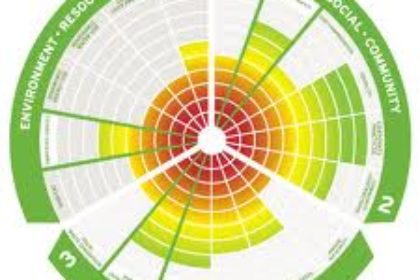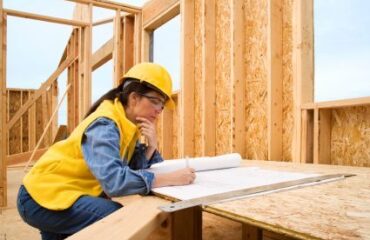Healthy Building Materials – How green can you go?

At Healthy Building Science we provide three primary services revolving around healthy building materials.
1) Bulk material testing. We cover this briefly in another blog post.
2) Building material research. Sometimes our clients are particularly interested in toxicity or resource conservation. Some clients concerned about climate change are asking for carbon footprint analysis in order to help make material purchasing decisions. We all have our priorities. Most often our clients are primarily interested in the toxicity impact during the use-phase of the material. We utilize our library and online resources such as Pharos, GreenSpec, BEES, and Athena to provide a comprehensive picture of how materials compare when stacked beside client priorities. This research goes beyond the Material Safety Data Sheets (MSDS) and can include; looking for ingredient information from right-to-know databases in other countries (more disclosure), contacting manufacturers directly with doctor letters requiring disclosure, and performing bulk material testing.
Healthy Building Materials and Healthy Specifications
Specification & material submittal reviews. This is our most common of the three services. In a Spec Review we look at chemical ingredients listed on the MSDS for materials specified by the design team. This preliminary review is intended to ensure there are no obvious conflicts with owner priorities. We’ve devised a quick screening method to filter listed ingredients. The following “precautionary” and “avoidance” lists are very helpful in this review process:
Living Building Challenge – Red List. This is a very ambitious avoidance list that includes formaldehyde, halogenated flame retardants, and PVC. It’s appropriate that items from the Red List should be excluded from “green” buildings… but it is a mighty difficult challenge. Look for future case studies that highlight our lessons learned.
California Prop 65. This is quite a long list of chemical ingredients known to the State of CA to cause cancer or reproductive toxicity. The list was not created to screen materials, but we find using this as an additional screen can reveal chemicals of concern that the other lists don’t mention. It is a mega-list with nearly 900 ingredient materials. There are some ingredients in Prop 65 that we ignore during spec reviews, such as Silica and Wood Dust. (We deal with these common “contaminants” through a good Indoor Air Quality Management Plan in the Division 01 Spec.)
EU – Registration, Evaluation, Authorization and Restriction of Chemical substances (REACH). The REACH database from the European Union has fewer than 100 listed ingredients. Many overlap with Prop 65, but there are some chemicals unique to this list not found on the Red List or Prop 65, such as various lead and sodium compounds.
UK – Restriction of the Use of Certain Hazardous Substances in Electrical and Electronic Equipment (RoHS). This is a rather brief list of hazardous ingredients to be avoided in electronics. The ingredients overlap with Prop 65, but if we come across lead, mercury, cadmium, chromium, PBB or PBDE – we like to mention as many “DO NOT USE” lists as possible!
Perkins & Will Transparency Lists. This is a wonderfully comprehensive free resource from a for-profit company – go figure! They have three primary lists that are backed up with medical studies demonstrating negative health effects from each ingredient on the list. The Precautionary List is the most extensive, but there is also a list of Asthma Triggers + Asthmagens, and also Flame Retardants to avoid.
Currently not all ingredients must be listed on MSDS in the United States. There is a massive debate going on right now about transparency in manufacturing, and public opinion is slowly coming around. The Healthy Building Network, Building Green, and the US Green Building Council are leading the charge for ingredient transparency in building materials. Someday all building materials may have Environmental Product Declarations on them like we have ingredient lists on food packaging now, but in the meantime industries grip on government and concerns over trade secrets allow manufacturers to select what ingredients they share publicly through MSDS.
If you can build a building in the US without using any materials from these five lists – we should know each other! It is a very small community of professionals that are committed enough to healthy building materials and have clients that push the envelope enough to achieve such rigorous healthy building design standards. Early in design we identify client goals and limitations, and get a reality check on how strictly we’ll avoid hazardous ingredients.
If you care about healthy indoor air quality – call us before you design that dream house or remodel your office. We’ll help you select healthy building materials and create a healthy specification.



